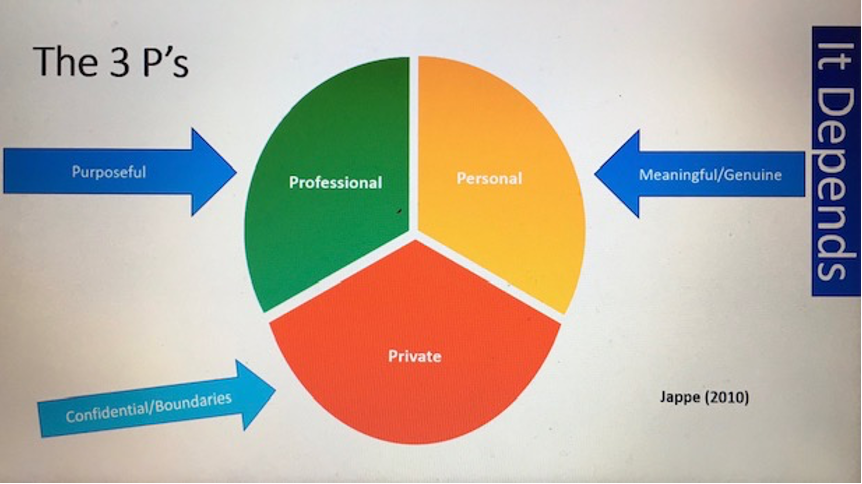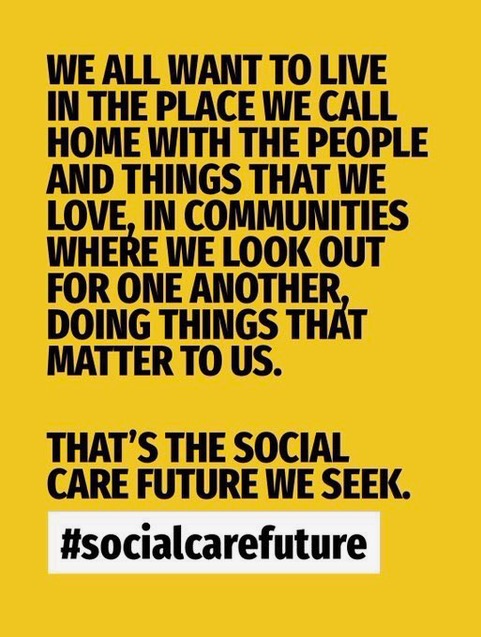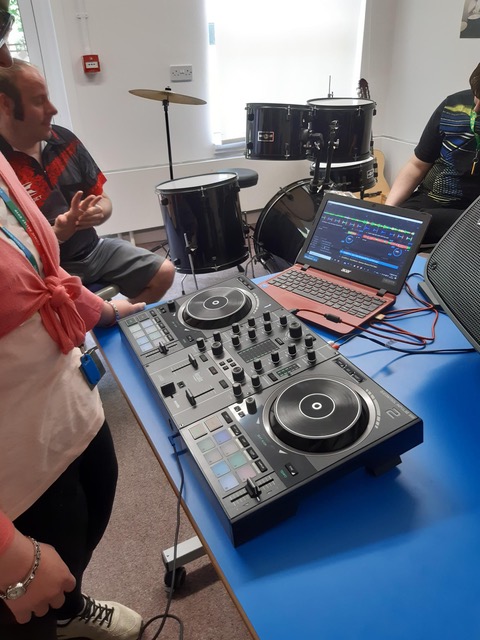It’s many moons ago that I first developed my own one page profile, reflecting on the detail of what is important to me and what good support looks like. The appreciation section was a shift to think about positive qualities and the surprise to learn what others saw that I hadn’t recognised in myself (apart from my husband, who when asked what he liked and admired about me said, “don’t put me on the spot, I can’t think of anything.” Luckily, he has improved!).
I continue to be delighted at the impact of one page profiles, the snapshot of a person on one sheet of paper; what we like and admire about a person so we can see their positive qualities rather a list of conditions or labels, the detail of what is important to someone, who and what must be present in their life and the good quality information about how to support a person well. The measure of a good quality one page profile is the detail and the action; is it specific enough and is the information acted on? One page profiles need to be a living document which reflect on the detail, any changes in preference or circumstance and explore what’s working and not working in the person’s life.
One page profiles are simple yet not simplistic, we are all unique and complex and one of the things to consider when completing a one page profile is the purpose of the document; who is the information for and what do others need to know? There are many uses for a one page profile; to gather rich, detailed information about how a person wants to be supported, as a way of introducing yourself, as part of a matching process, within recruitment or getting to know team members better.
Some years ago, I was working with a team who I was keen to support to develop their own one page profiles; to gather information about what helped them have a good day at work and to think about matching them well with the people we supported. There was much reluctance about the sharing of information and the perceived blurring of professional and personal boundaries. We considered the purpose of the document and who the audience was. For the team, sharing about hobbies was important as this helped with the matching process, supporting them to have more good days at work. For this purpose it wasn’t necessary to share detailed information about their morning routines but this would have been essential to share if they were receiving home care support. At the time I was confident in the tool but didn’t have the language to explain the parts of ourselves which felt comfortable to share until I learnt about the 3P’s.
 The 3P’s is a Danish concept developed by Jappe which recognises the three areas of self when working alongside people; the professional, the personal and the private (cited in Charfe and Gardner 2019 [1]). Professional refers to our working roles, drawing on knowledge, theory and experience which informs how we work together and support people. Personal is the part of ourselves that we share to support the building of authentic relationships, reducing imbalances of power and connecting with others on a human level. The professional part of ourself recognises the value of sharing some of our personal side when developing relationships with people we are working alongside. The 3P’s, as with the one page profile, recognises the private self, the part of us that is only shared with those closest to us. What we share depends; on the context, the relationship and the experience. The professional, personal and private is unique for each person and situation and constant reflection is needed to consider appropriate boundaries whilst being open to developing authentic relationships.
The 3P’s is a Danish concept developed by Jappe which recognises the three areas of self when working alongside people; the professional, the personal and the private (cited in Charfe and Gardner 2019 [1]). Professional refers to our working roles, drawing on knowledge, theory and experience which informs how we work together and support people. Personal is the part of ourselves that we share to support the building of authentic relationships, reducing imbalances of power and connecting with others on a human level. The professional part of ourself recognises the value of sharing some of our personal side when developing relationships with people we are working alongside. The 3P’s, as with the one page profile, recognises the private self, the part of us that is only shared with those closest to us. What we share depends; on the context, the relationship and the experience. The professional, personal and private is unique for each person and situation and constant reflection is needed to consider appropriate boundaries whilst being open to developing authentic relationships.
Through the pandemic and the shift in ways of working to use virtual means rather than face to face to build connections, it has been interesting to reflect on the three spheres of professional, personal and private. While face to face groups have been on hold, Circle Family has moved to supporting connections and keeping people entertained through a Facebook Group Circles Connected. A conversation about childhood hobbies uncovered a common theme between our members for tap dancing. This led to me sharing a weekly video of my tap dancing. Would I have invited people into my home to see me tap dancing? Perhaps not but virtually bringing people into my home to watch my dancing was made possible by the shift in boundaries created by the pandemic. The liminal space encouraged a new way of working and creativity and a different way of sharing my personal self. The shift to virtual working and an increasing use of digital tools has led to a shift of boundaries between the professional, personal and private. When workers were office based there was a clearer distinction between the professional and the personal. Now through the use of technology, we are connecting with colleagues in the own homes via video calls, an invitation (maybe reluctantly) into people’s personal space.
Community Circles have recently started working with Suffolk County Council and their Building Communities Team as part of their Social Prescribing Plus. Because of the geographical distance much of our work together would have took place via Zoom or Teams. We originally thought this would be from our office spaces but due to the pandemic, calls took place in lounges or conservatories; moving around to accommodate partners and children, seeing pets and regular mid-meeting tea and coffee deliveries. We also had a few fancy dress themes and some karaoke! These are the sparks of delight which online meetings have brought us, a definite shift of the professional and personal and also a deeper feeling of connection with colleagues.
During our work together, Suffolk colleagues have developed their own one page profiles, here Resilient Communities Manager Colin Baldwin reflects on their experience…
“We have a small but very committed and dedicated community development team, based within the public health department at Suffolk County Council. We started working with Community Circles as part of our ‘Connected Communities’ project which is aimed at tackling social and rural isolation amongst older people in the eastern part of Suffolk. We were immediately taken with a number of the tools and techniques that our friends at Circles introduced to us, including the use of one page profiles. Initially our thoughts were focussed on their use with the older people that we were reaching out to in partnership with a number of other organisations who are working with us. Fairly soon however we started talking about the value and strength of one page profiles in a wider context for us, namely ourselves! We decided to set about producing our own profiles; developing and sharing them with each other. We are a close, very supportive and open group who have become even closer (mentally if not physically!) during Covid and our enforced move to online liaison rather than in person meeting. We all found the exercise of producing our own profiles to be extremely interesting and beneficial, both to ourselves individually and to our team colleagues. We each felt that the one page profile represents the unique differences that we all have and that this enables others to learn how best to interact and support one another. As a result of this we are now looking to expand the use of one page profiles across the wider team within which we are located…. in addition to using them in our work within local communities of course!”
Have you experienced using one page profiles, either for yourself, with people you support or your team? We’d love to hear your reflections.
You can see my one page profile here.
[1] Charfe, L. and Gardner, A. (2019) Social Pedagogy and Social Work Sage, London






